Water Culture and Water Civilization in the Ottoman Empire
Osmanlı'da Su Kültürü ve Su Medeniyeti
Since its foundation, the Ottoman Empire cared about and developed water resources and water culture, structures. Since water was a part of both religious and social life, the Ottomans built various water structures.
In the Ottoman Empire, great importance was attached to meeting the water needs of settlements, especially cities. All the facilities built from the source of water to the place of use and distribution of water were referred to as “waterways”.
These structures include examples such as fountains, fountains, fountains, fountains, baths, caravanserais, bridges, dykes, aqueducts and water scales.
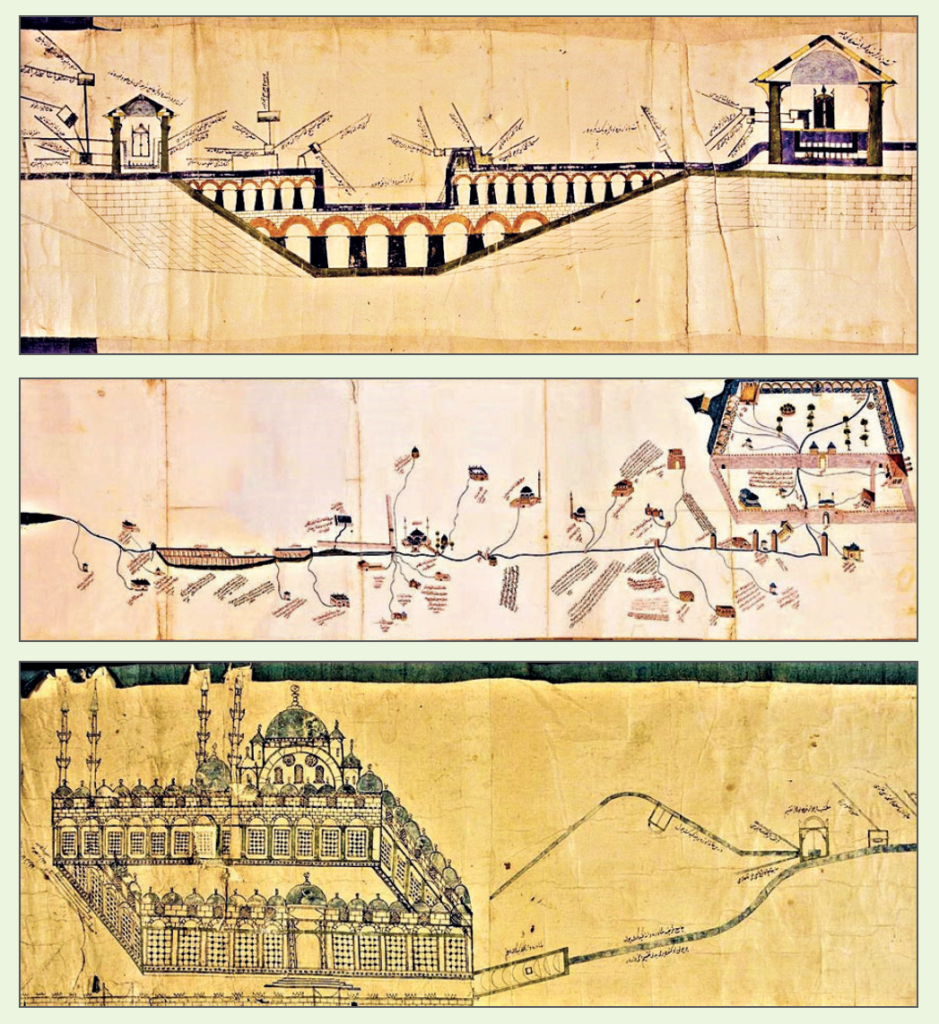
The waterways and systems of the Ottoman Empire generally consisted of two parts: the water transmission system and the water distribution system. The water transmission system was the part that took water from the source and delivered it to the city or buildings, while the water distribution system was the part that distributed the water for use in the city or buildings.
In the water transmission system, dykes were usually used to take water from the source. The dykes created a pool by interrupting the flow of water, from where the water was transferred to pipes or canals.
Pipes were usually made of adobe or stone. Canals could be open or closed. Open canals allowed water to flow on the surface, while closed canals allowed water to flow underground. Structures such as aqueducts and water scales were also used in the water transmission system.
Aqueducts were structures that allowed the water to overcome the height difference, while water scales were structures that adjusted the pressure of the water and changed its direction.
In the water distribution system, various structures were built for the use of water in the city or in buildings. The most common of these were fountains, sebil and fountains. A fountain was a simple structure with a faucet that met the drinking and cleaning needs of the people.
Sebil, on the other hand, was a structure built by philanthropists and distributed free drinking water to the public. The fountain was a structure located in mosque courtyards and used for ablution. The water distribution system also included structures such as baths, caravanserais and bridges.
A bathhouse was a building that met the bathing needs of the people. The caravanserai was a structure that met the accommodation needs of travelers. The bridge was a structure used to cross obstacles such as rivers or streams.
Ottoman Fountains
Fountain systems in the Ottoman Empire include historical water structures built for the collection, transportation and distribution of water. The Ottoman Empire developed provisions on water management with its inheritance from Islamic law, and carried out activities in many areas such as usage rights, irrigation activities, water distribution and responsibility for bringing water to cities.
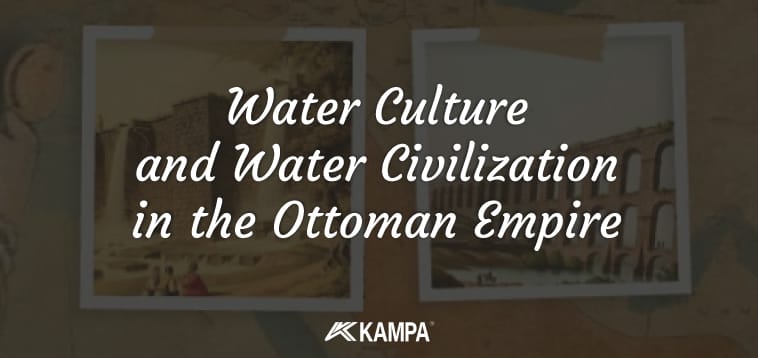
Ottoman fountains are important indicators of these activities embodied in architectural water structures. Ottoman fountains can be of different types according to their location and purpose. For example, wall fountains, corner fountains, square fountains, fountains designed together with fountains, namazgâh fountains, room fountains, column fountains and fountains. The main scheme of Ottoman fountains in the classical period is as follows: The reservoir where the water is stored, the mirror stone on which the faucets are located, the basin /urna where the water from the faucet is collected and flowed, and the waiting benches on both sides of the basin.
The architectural style and ornamentation of Ottoman fountains changed according to the centuries. In the early period, simple fountains with a mirror stone in a pointed arched niche were replaced by highly ornate and elegant marble fountains in the classical period.
With the influence of baroque and rococo styles, more vibrant and colorful fountains emerged in the XVIIIth century. In the XIXth century, with the neoclassical style, fountains with simpler and geometric forms were built.
In the Ottoman Empire, almost every Sultan, Grand Vizier, Valide Sultan and other dignitaries built many fountains, which have an important place in Ottoman culture, social life and architecture and are indicative of the economic, social and political power of the period. These fountains are valuable both as works of philanthropy and art.

Ottoman Fountain Architecture and Fountain Parts
The sections of Ottoman water fountains show the architectural characteristics of historical water structures built for the collection, transportation and distribution of water. The main scheme of Ottoman fountains in the classical period is as follows:
- Reservoir: It is the section where water is stored. It is usually located behind or under the fountain. The reservoir is equipped with measuring units such as nozzle, bobbin and sackcloth, which regulate the flow and pressure of the water.
- Lüle: A unit of measurement used to measure the amount of water supplied to the city during the Ottoman period. Lüle is also the pipe attached to the mirror stone of the fountains through which the water flows.
- Masura: It is a unit of measurement used in the past in river distribution and is 4/1 the size of a nozzle.
- Sackcloth: One of the units of water measurement, a sackcloth is one-fourth of a bobbin and one-sixteenth of a nozzle.
- Mirror stone: It is the part on the front of the fountain on which the faucets are located. The mirror stone is usually made of marble and reflects the architectural style of the fountain. The mirror stone can be in a pointed arched niche or rectangular. There may also be an inscription on the mirror stone containing information such as the person for whom the fountain was built, date and purpose.
- Faucet: It is the part on the mirror stone that allows water to flow. Faucets are usually made of copper or brass and can be decorated or plain. The number of taps varies according to the size and importance of the fountain. Some fountains may have a single faucet, while others may have more than one faucet.
- Boat/boiler: It is the part under the fountain where the water from the faucet is collected and flows. The basin is usually made of marble and can be round, oval or rectangular. The bowl is equipped with small holes to avoid wasting water. Some fountains may also have a pool instead of a basin.
- Seki: This is a section on either side of the fountain for people to wait while drinking or filling water. The bench is usually made of marble and can be stepped or flat. There may also be small niches or hollows on the bench.

Water Dispensers in the Ottoman Empire
Sebîl, which means “path ” in the dictionary It is stated that the term comes from the expression “fī sebîli’llâh” (in the way of Allah, for the sake of Allah), and it is also known that the name sebbâle was used earlier, although it was not very common.
The fountains, which are the most artistic structures of Ottoman-Turkish water architecture, are also unique works of Turkish architecture. Sebil is an Arabic word and has various definitions. The fountains, which are places where water is distributed to passersby for charitable purposes, are also places where sherbet is distributed on special days and nights.
The fountains, which are among the most beautiful decorations of Istanbul squares and streets, offer monumental examples of period and style features with their excellent architectural arrangements,
networks, stone decorations, ornaments such as writing and pencil work. The fountains, which are densely built in Eminönü in Istanbul, are the most important documents of the importance given to social aid in the past.
Sebils, which are elegant artistic works of Ottoman water architecture, are
structures unique to Turkish architecture. Sebils are small charitable institutions where drinking water is distributed free of charge to passersby and sherbet is distributed on special occasions such as festivals and holy days.
In Turkish culture, bringing water to a place, giving a bowl of water to a thirsty person
or building a fountain or a fountain on a road has been accepted as a great charity in the society.
The water of the sabils was usually supplied from nearby springs, wells or waterways. Some fountains have water tanks or cisterns.
The water from the sebils flowed continuously or was distributed at certain hours. Sebils were not only used for water distribution, but also served a social and cultural function. Sebils were places where people met, chatted and rested.
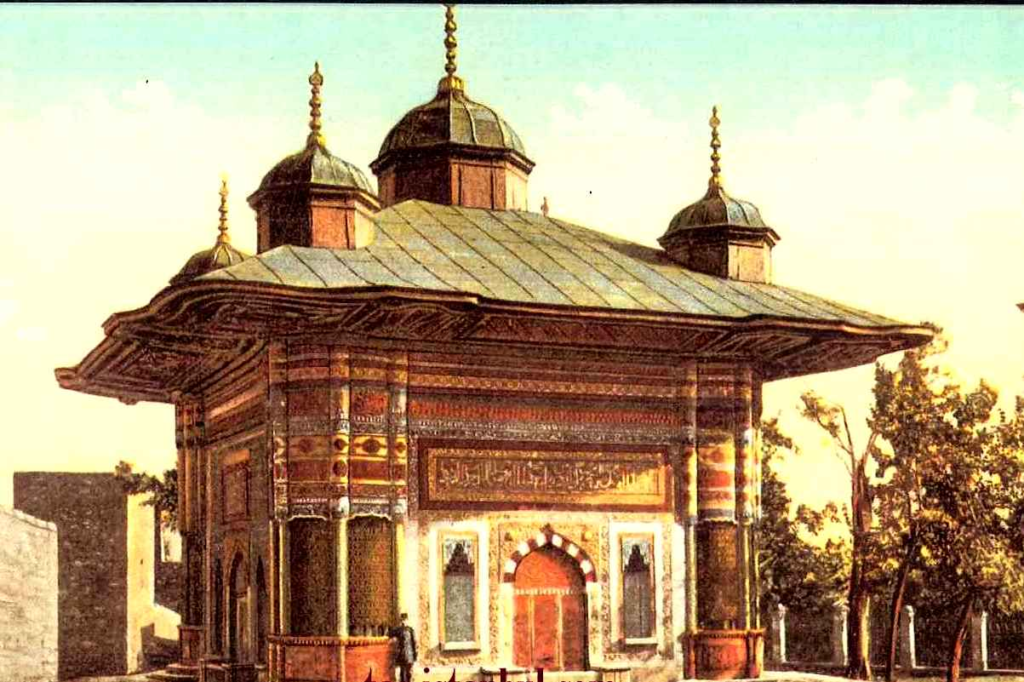

Fountain in the Ottoman Empire
A fountain is a kind of fountain built for water distribution and ablution in Ottoman architecture. The features of fountains can be listed as follows:
- Fountains were usually built next to or near religious or social buildings such as mosques, madrasahs and tombs. Some fountains were located independently in squares or streets.
- Fountains can be square, rectangular, polygonal or round. There is a pool in the center and taps around it. Some fountains are covered with a dome, vault or roof. Some fountains were left open.
- Materials such as marble, stone, brick and wood were used in the construction of the fountains. In the decoration of the fountains, art elements such as tiles, pencil work, geometric and floral motifs were seen.
- Water for the fountains came from nearby springs, wells or waterways. Some fountains also had a water tank or cistern. The water in the fountains flowed continuously or at certain times.
- The operation and maintenance of the fountains were carried out by foundations. The people in charge of the fountains were called sebilci. In addition to distributing water, sebilci would also ensure the cleanliness and orderliness of the fountain.
- Fountains were not only used for water distribution and ablution, but also served a social and cultural function. They were places where people met, chatted and rested. Some fountains also had educational sections such as a Qur’anic school or library.

Bath Culture in the Ottoman Empire
In the Ottoman period, water for the baths was usually supplied from nearby springs, wells or waterways. Some baths also had water tanks or cisterns. The water in the baths flowed continuously or was supplied at certain times.
The Ottoman bath culture is an important part of the Turkish bath culture, which has a history of thousands of years. During the peak of the Ottoman Empire, baths became the center of social life. Ottoman baths were not only used to ensure cleanliness, but were also places where social and cultural activities were held.
In Ottoman bath culture, washing is not only a physical cleaning process but also a form of social interaction. Baths were places where people came together to chat, communicate, trade and even organize political meetings.
The first step in the hammam is usually done in the changing room. Here visitors undress and take their towels. Then they move on to the hot and humid hammam area. This area usually has marble floors and walls and is characterized by high temperature and humidity.
This temperature causes people to sweat and opens the pores of the skin. The second step is the ritual of washing in the hammam. Washing in the hammam is usually done by a hammam tellak.
Ottoman hammam culture is associated with health benefits as well as cleanliness and socializing. As well as removing toxins from your body, hot water baths can help relax muscles and reduce stress.
For this reason, visits to the hammam are part of a healthy lifestyle for many people. In addition, massages and skin treatments in different parts of the baths can help you gain a healthy appearance by nourishing and renewing your skin.
Ottoman Caravanserais and Waterways
Caravanserai: Ottoman caravanserais are historical buildings that originated from Islam’s understanding of solidarity and were kept alive through foundations and responded to military, economic and social needs. Caravanserais are sturdy buildings built by the state or philanthropists where caravans stayed on trade routes and all their needs were met free of charge.
Caravanserais also had various functions such as ensuring the safety of trade goods, caring for the animals of travelers, providing opportunities for prayer, bathing, reading, and treatment.
Ottoman caravanserais were not only places of accommodation but also an important part of waterways. Most of the caravanserais had fountains, wells, cisterns, fountains and baths to meet the water needs.
Some caravanserais were located at the beginning or end of waterways. For example, the Selimiye Caravanserai in Edirne was located at the beginning of the Edirne Waterway built by Mimar Sinan.
This waterway carried water from the Tunca River to the city through a 17 km long canal. Along the waterway, 33 bridges, 15 culverts, 2 dykes and 1 pond were built. The waterway also supplied water to many buildings in the city such as mosques, madrasahs, imaret, baths and fountains.
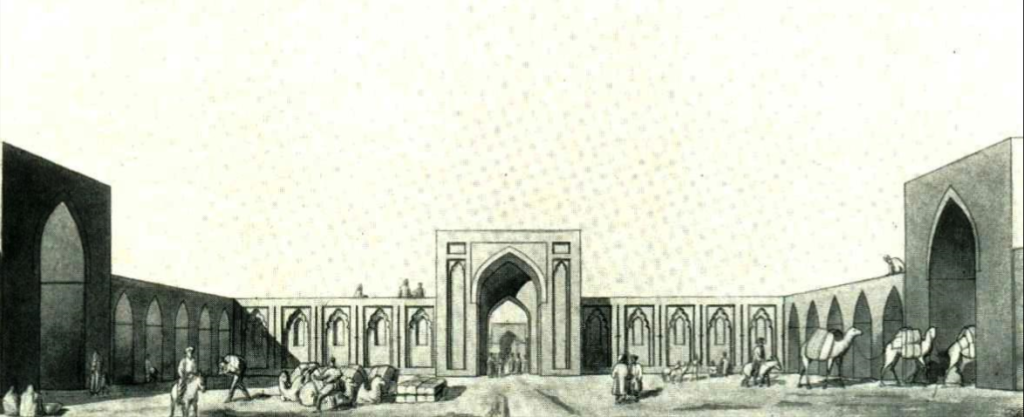
Water Bridges in the Ottoman Empire
In the Ottoman Empire, water bridges were generally used to ensure the flow of water, facilitate water distribution or reduce the pressure of water. Water bridges are important works of the Ottoman Empire in terms of both architecture and engineering.
Water bridges have also contributed to the beautification of cities, the revitalization of social life and the preservation of cultural heritage.

What is a water bendi in the Ottoman Empire? What does a water bendi do?
The walls built in rivers or estuaries in front of flood waters in order to collect and accumulate water are called dykes. A dike is a barrier built across a river that changes the flow characteristics of the water and the height of the water level. There are many designs, but generally the water flows freely over the top of the dike before flowing to a lower level.

What is an aqueduct in the Ottoman Empire? What does an aqueduct in the Ottoman Empire do?
They are stone structures with small channels for the transportation of water. Aqueducts are arched bridges used to ensure that the waterway that provides the city’s water needs is always at the same height and with very little slope in periods when water pipes could not be made pressure-resistant.
Aqueducts were first built in the Ancient Roman period. Aqueducts were used for purposes such as transporting water from the source to the city, irrigating agricultural areas, operating baths and fountains.
In other words, aqueducts are canals built by humans to carry water. In modern engineering and architecture; it is a system consisting of pipes, arcs, canals, tunnels and all kinds of structures supporting them, used to take water from its source to the desired point.
The Ottoman Empire continued this method, which it took from other ancient civilizations, by building aqueducts in various parts of the empire during its own period. Aqueducts in the Ottoman Empire also carried an architectural and aesthetic value. Some aqueducts have inscriptions, decorations and various motifs on them.

Among the most famous aqueducts in the Ottoman Empire are the following:
Bozdogan Aqueduct: Built during the Late Roman-Early Christian periods, this aqueduct was connected to a water network brought from Thrace. After various repairs during the Ottoman period, it was used as part of the Halkalı waterways.
Kırkçeşme Aqueduct: There are thirty-five arches on the Kırkçeşme water facility, the most important water network of the city. Six of them are monumental examples with two or three stories. Built by Ahmed I, these arches are among the masterpieces of 17th century Ottoman architecture.

Mağlova Su Kemeri: Kırkçeşme su tesisi üzerinde bulunan bu kemer, I. Ahmed tarafından 1622 yılında inşa ettirilmiştir. 36 metre yüksekliğinde ve 258 metre uzunluğunda olan bu kemer, iki katlı ve on altı gözlüdür
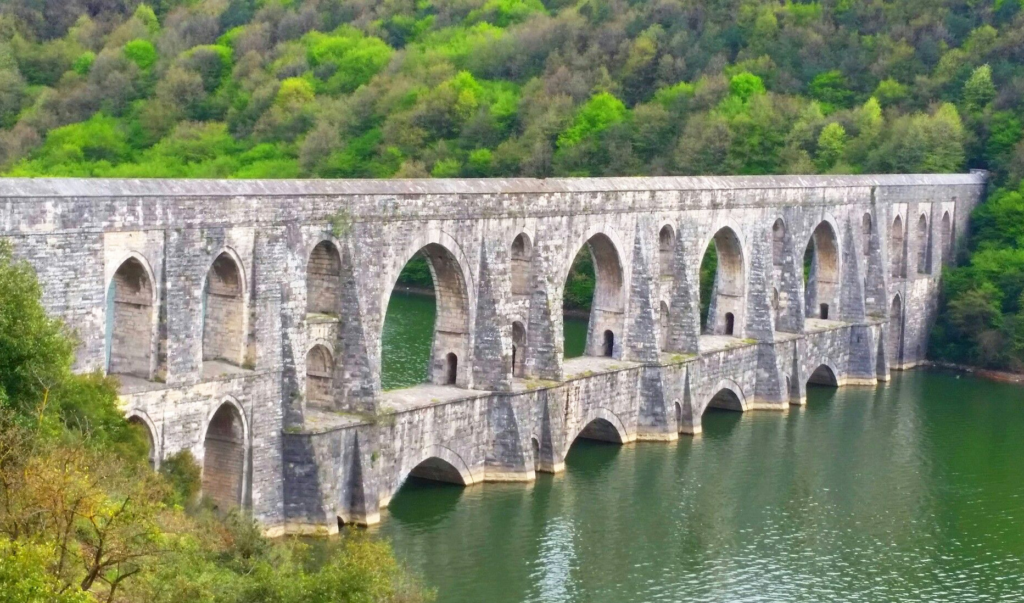
Justinian Aqueduct: There are many examples of aqueducts from the Roman period in Anatolia. One of them is this aqueduct built by Emperor Justinian in Nikaia (Iznik). This 533-meter-long aqueduct has been restored today and has become a touristic attraction.

What are water scales in the Ottoman Empire and what do they do?
In the Ottoman Empire, water scales were used to control the pressure of the water coming into the city from water sources. Water scales are structures that work according to the principle of combined containers and adjust the water pressure. Water scales, which provide the necessary water to fountains, fountains, mosques and baths, adjust the pressure in the waterways and distribute the water by measuring the water, are the structures that have survived to the present day with decreasing numbers.The water scales also ensured the release of the air that formed in the waterways and prevented the flow.

How were water resources protected in the Ottoman Empire?
During the Ottoman period, water resources were protected by waterways built by the sultans. Waterways were engineering works that required technical knowledge and skills for the collection, transportation and distribution of water. The protection of water resources was of both moral and social importance for the Ottoman Empire.
Why were water resources important in the Ottoman Empire?
During the Ottoman period, water resources were important from spiritual, social and technical perspectives. Water was valued as a symbol of cleanliness and life in the Islamic faith. Water supply was necessary to meet the needs of the city, to ensure health and hygiene conditions, and to support various arts and crafts activities. Solving water-related engineering problems showed that the Ottoman Empire had an advanced civilization.
How did waterways work in the Ottoman Empire?
Waterways are devices used to transport water from one place to another. The working principle of waterways is related to the potential energy and evaporation of water. There are different types of waterways.
For example, an Archimedes screw is a device that moves water upwards. A cooling tower is a device used to cool water . A water purification system is a device used to clean water. Hydroelectric power plant is a device that converts the energy of water into electricity . Water distillation device is a device used to purify water.

